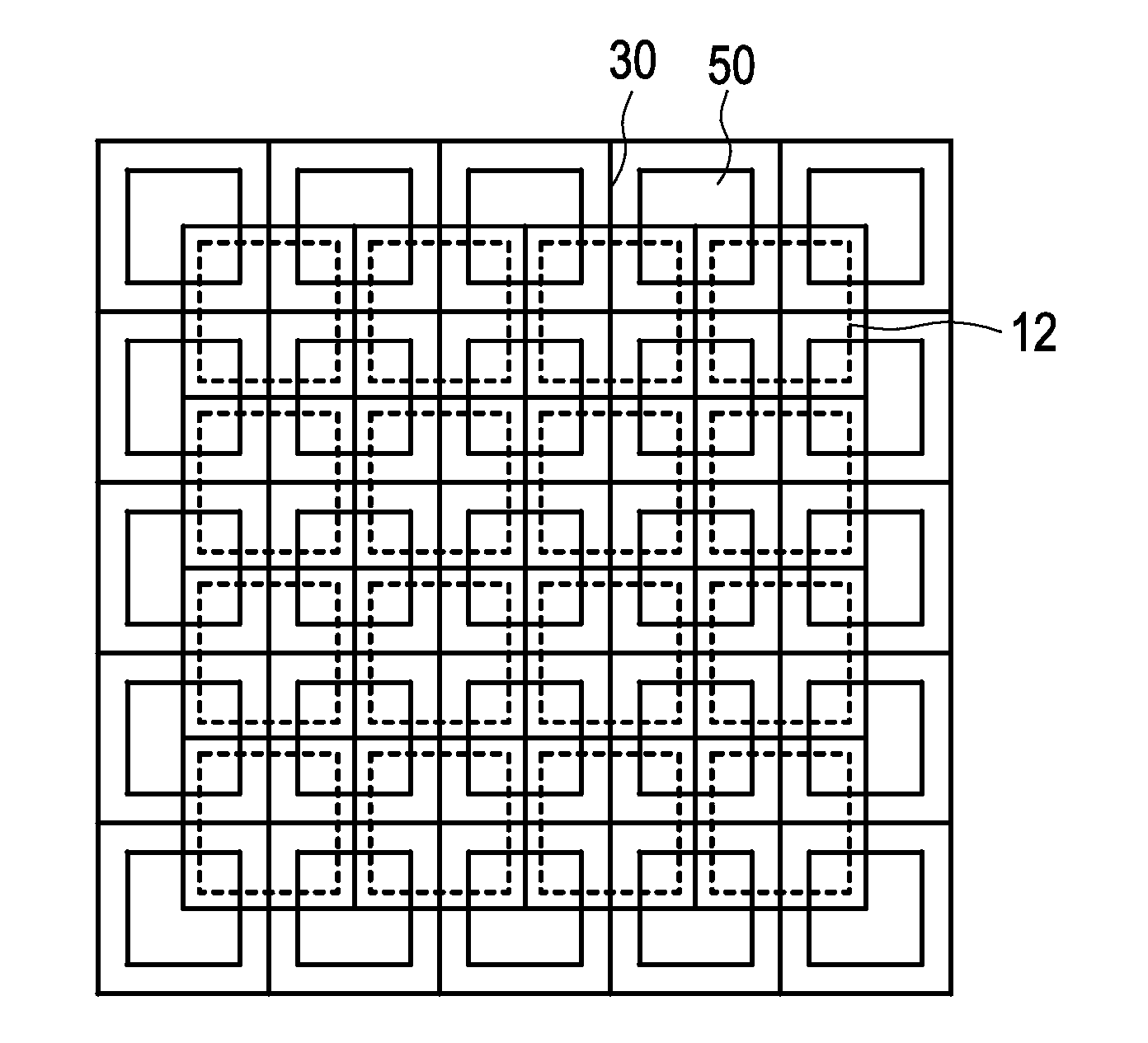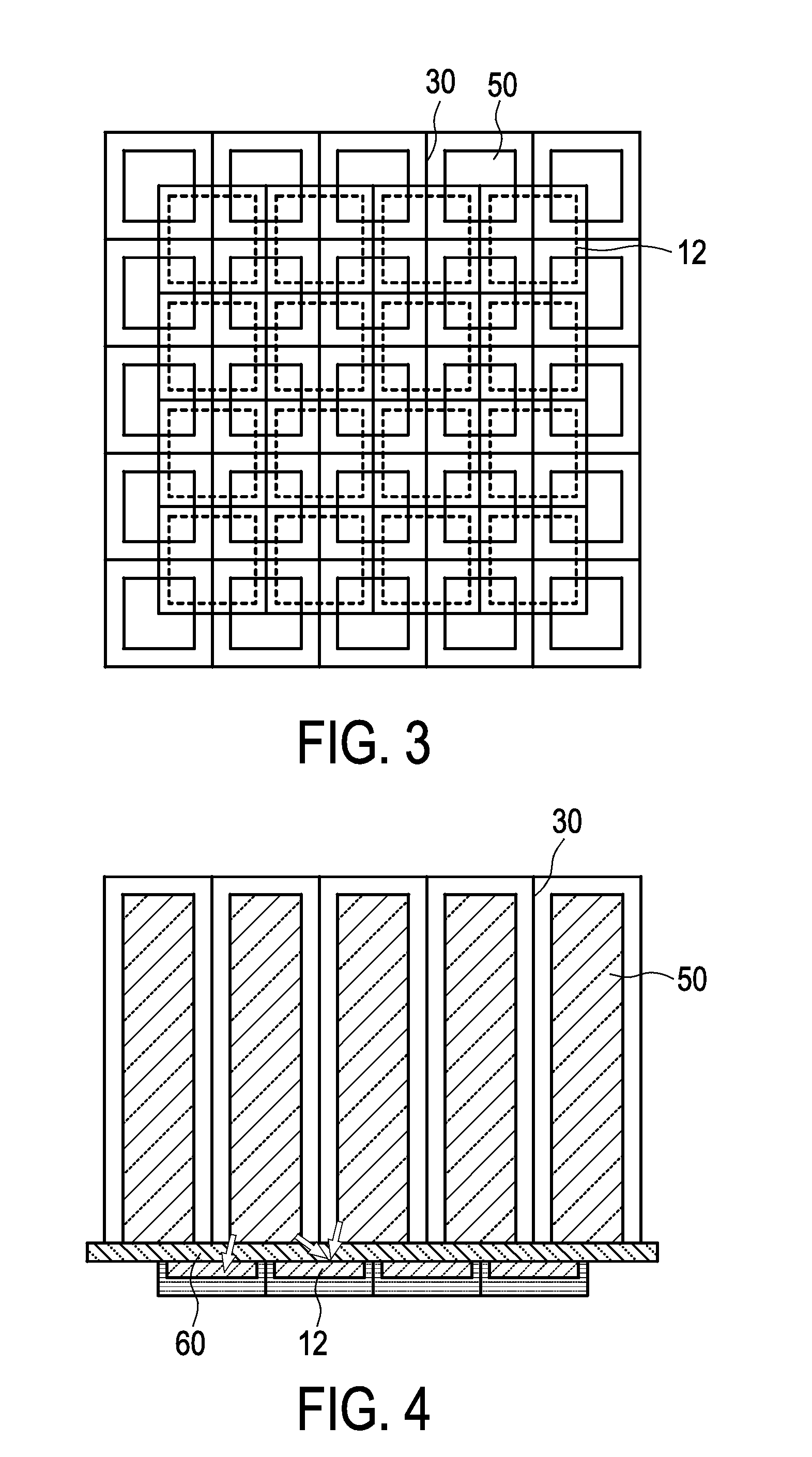Pixellated detector device
a detector device and pixel technology, applied in the field of pixel detectors, can solve the problems of increasing undesirable light crosstalk, detector exactly misses the most of the area of the crystal where the highest light output occurs, and serious impediments to adopting this new technology, so as to reduce the optical crosstalk between pixels and achieve the effect of higher light collection efficiency and reduced optical crosstalk
- Summary
- Abstract
- Description
- Claims
- Application Information
AI Technical Summary
Benefits of technology
Problems solved by technology
Method used
Image
Examples
first embodiment
[0032]FIG. 3 shows a top view of a pixellated detector device according to a A half-pixel shift is introduced between scintillator crystals 50 (with their reflective layer 30) and detector pixels 12 and enables the identification of a scintillator crystal 50 from four detector pixels 12 instead of nine pixels in case of optical crosstalk. Glass plates without any mechanical structuring may be used as a common substrate 60 (not shown in FIG. 3) for detector pixels 12 with the photosensitive areas 12 of the detector array and scintillator crystals 50 of the crystal array. Mounting accuracy and costs are strongly reduced. Even a different pixel and crystal pitch can be used, enabling an exact crystal pitch with tiled detectors.
[0033]FIG. 4 shows a cross-section of the pixellated detector device according to the first embodiment with the common substrate 60 and the reflective layer 30. As indicated by the arrows in FIG. 4, light emitted at crystal edges of two neighboring scintillator ...
second embodiment
[0038]FIG. 5 shows a top view of a pixellated detector device with a brick-type pixel structure, a reflective layer 30 and scintillator crystals 50. This modification provides a sort of brick structure where two neighboring detector pixels 70 are merged, either by chip design or by software binning This enables crystal identification from only three detector pixels with doubled pixel area. The dark count rate will be increased by 50% but the data readout rate from the detector array (e.g. SiPM chip) will be halved. In view of the maximum readout rates from a complete PET system this might be a cost saving solution.
[0039]FIG. 6 shows a top view of a pixellated detector device according to a third embodiment with a larger pixel area, a reflective layer 30 and scintillator crystals 50. This modification uses four times larger detector pixels 72 than the first embodiment, with one scintillator crystal 50 centered above the detector pixel 72 and neighboring crystals centered above two o...
PUM
 Login to View More
Login to View More Abstract
Description
Claims
Application Information
 Login to View More
Login to View More - R&D
- Intellectual Property
- Life Sciences
- Materials
- Tech Scout
- Unparalleled Data Quality
- Higher Quality Content
- 60% Fewer Hallucinations
Browse by: Latest US Patents, China's latest patents, Technical Efficacy Thesaurus, Application Domain, Technology Topic, Popular Technical Reports.
© 2025 PatSnap. All rights reserved.Legal|Privacy policy|Modern Slavery Act Transparency Statement|Sitemap|About US| Contact US: help@patsnap.com



